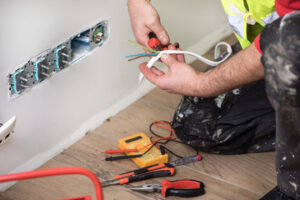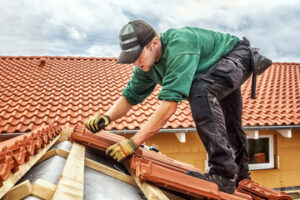Cleaning your teeth is a professional dental hygiene procedure that removes plaque and tartar from your tooth surfaces. It can also remove surface stains caused by foods and beverages, such as coffee or red wine, or smoking and chewing tobacco.
Regular teeth cleaning can prevent gum disease, which starts with gingivitis and progresses to periodontitis, which destroys the tissue and bone around your teeth. It can also detect and fix dental damage, like broken fillings or cracked crowns. Contact Teeth Cleaning Las Vegas now!

Cleaning teeth is an ongoing journey and requires a daily brushing routine and regular dental cleanings. While brushing removes some food and bacteria, the rest of the debris must be removed by flossing or scraping with a tongue cleaner to avoid cavities, gum disease, bad breath, and other oral health issues.
During a dental cleaning or prophylaxis, a dental hygienist removes plaque and hardened tartar that has developed on the teeth even with careful brushing. These deposits, when left unattended, can lead to gingivitis and periodontitis—both of which are serious infections that destroy the bone around the teeth. Dental cleanings are important because they remove these deposits before the disease progresses and also give the dental hygienist a chance to examine the mouth for signs of other health issues.
While it is recommended that patients brush their teeth twice daily for about two minutes each time, this is only sometimes possible due to busy schedules or lack of motivation. Brushing is best done with a soft-bristled toothbrush and a pea-sized amount of toothpaste. Begin by holding the brush at a 45-degree angle to the gum line and use small circular motions on the outer surfaces of the teeth. Make sure to get the back molars, upper areas of the chewing surfaces of the teeth, and the inside surface of your front teeth.
When you finish, rinse your mouth with cold water and spit out toothpaste, saliva, and food remnants. Do not swallow these remnants, as they may contain harmful bacteria.
If you notice that your personal information has been sold, report it to the marketplace where you received the product or to the seller. This helps prevent others from falling victim to this type of scam.
In addition to cleaning the teeth and removing deposit buildup, dental professionals inspect the teeth for signs of tooth decay, gum disease, bone loss, and other problems. This is why scheduling regular appointments for teeth cleaning and exams is important.
Professional dental cleaning is similar to washing your car. Spraying the vehicle with a water hose removes some of the large chunks of dirt, but cleaning the car takes a sponge and some elbow grease. Dental cleanings remove the remaining plaque and tartar on the teeth and underneath the gum line that isn’t removed with daily brushing, which is why it’s so important to combine good at-home oral hygiene with routine professional dental cleanings. Keeping your teeth healthy with regular brushing and professional cleanings will help you enjoy a bright, beautiful smile for life!
Flossing
Flossing uses a thin thread-like material to reach areas between teeth that are not easily reached with a toothbrush. It is important to floss at least once daily to remove plaque, avoid gum disease, and keep your teeth healthy. During dental cleaning, the hygienist may also floss and polish your teeth with gritty toothpaste to help remove surface stains.
If you are unsure how to floss properly, ask our hygienist for a demo or ask your dentist for a recommendation. Ideally, flossing should be done once a day, in the evening before bedtime. You should use good-quality unwaxed floss or an interdental brush or pick that has earned the ADA seal of approval.
When flossing, ensure not to be too aggressive as you may injure the delicate tissue between your teeth. The goal is to get the floss between each contact point of each tooth, curved against the gum line and up toward the highest contact point of each tooth. Be sure to floss the back side of each tooth, as well. A gentle sawing motion works best, rather than a snapping or scraping action that can irritate the gums.
During flossing, the hygienist will remove any remaining plaque or food particles from between your teeth and check for gum disease. If you have gum disease, the hygienist will recommend a special antibacterial mouthwash to help control it. This is usually followed by a fluoride treatment that will help remineralize your teeth and make them stronger and more decay-resistant.
It is important to note that brushing and flossing should not be viewed as a substitute for regular dental visits. Proper home care, twice-daily brushing, and monthly visits to your dentist will give you the best oral health possible.
Your oral health is connected to your overall health, so don’t ignore those little problems. Make your appointment today to ensure you have a clean, bright smile! Call or email us to schedule an appointment.
We look forward to seeing you soon!
Discreet Straightening
Patients who choose Invisalign don’t have to worry about metal wires and brackets in their mouths. Instead, they get clear trays that are virtually invisible to those around them. This makes them popular among adults who want to straighten their teeth without drawing attention to themselves in professional and social settings. The trays are also removable, allowing patients to continue eating their favorite foods and brushing their teeth thoroughly.
As the treatment progresses, each tray shifts the position of your teeth ever so slightly. When you finish the last set, your smile will be straighter than ever! The trays are made of BPA-free plastic and custom-made to fit comfortably in your mouth. You’ll need to wear them for 20 to 22 hours daily, but they can be easily removed for meals and special occasions.
While wearing your trays, you’ll need to visit your dentist in Fircrest for regular check-ups and receive new trays when required. Our team will make sure you’re on track to achieve your dream smile in the timeframe we’ve agreed upon.
The Invisalign treatment is based on SmartTrackTM, a patented technology that takes advantage of years of research in biomechanics and materials science. The material is designed to be more effective than traditional braces in shifting teeth’ positions. Additionally, the trays are easier to clean than braces, which can help prevent plaque buildup and gum disease.
Once you’ve completed your Invisalign treatment, we will provide you with retainers to help keep your teeth in their new positions. Wearing the retainers regularly will help prevent them from shifting back to their old locations, allowing you to enjoy your beautiful, straight smile for a lifetime!
Boosted Confidence
Whether you’re preparing for a big meeting, going on a date, or simply meeting up with friends, there’s nothing like a confident smile to help set the tone. Many people struggle with their smile, feeling self-conscious about their teeth or the condition of their mouth. However, Invisalign is a discreet and convenient solution that can transform your smile without disrupting your daily life.
By gradually straightening your smile, you’ll be able to see and feel the progress, further propelling you toward the end goal of a stunning smile. This sense of accomplishment can also boost your confidence and improve your overall well-being, leaving you with a more radiant, beautiful smile.
Invisalign is a discreet and comfortable orthodontic treatment that can be used with confidence in any social situation. As long as you keep up with your scheduled visits and wear your trays correctly, your treatment should go smoothly. While some people may experience minor discomforts, they are usually short-lived and not as severe as those associated with traditional braces.
The clear aligners are easy to remove and put back in, giving you flexibility with your daily routine. However, it’s important to keep in mind that they must remain in for the duration of your Invisalign treatment. If you remove your aligners too much, or forget to place them back in, it can cause them to move back to their original positions and delay your results.
While you’re wearing your aligners, it’s recommended that you brush and floss at least twice a day to ensure they stay clean. You should also remove and rinse your aligners before brushing your teeth to prevent toothpaste residue from building up on them. It’s also a good idea to keep a supply of replacement trays on hand in case you lose or damage yours.
If you’re interested in finding out more about Invisalign, find an Invisalign-trained provider near you today. They can take digital impressions of your teeth and create a personalized Invisalign treatment plan that will lead to a beautiful new smile.






